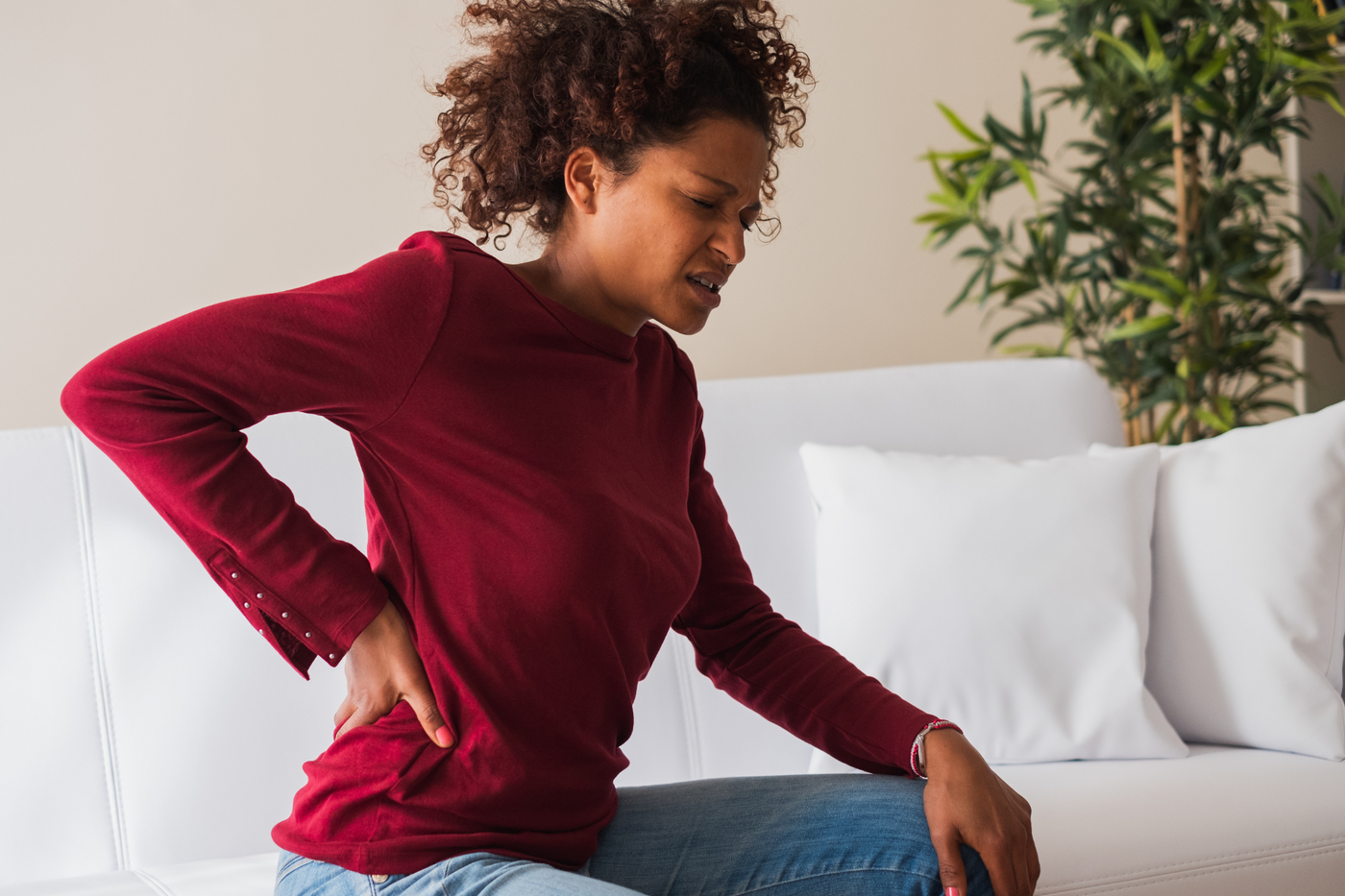Fibro Fix Blog — Chronic Pain

Lifestyle Factors to Reduce Pain and Inflammation 0
Chronic pain is a common and complex problem affecting 20–30% of the population of Western countries. The pharmaceutical industry has garnered billions of dollars in painkiller and anti-inflammatory sales, yet this hasn’t come without potential health risks to consumers from a well-documented crisis level of opioid addiction to frequent gastrointestinal complications and an increased risk of developing cardiovascular disease. We witness these side effects with an understanding that pharmaceuticals may provide partial, and not always full relief from chronic pain.
It’s no wonder we’re hearing from a lot of patients who are looking for a more natural approach to managing their chronic pain.
What is Chronic Pain?
We all feel physical pain from time to time. Injury, inactivity, sickness and disease can cause many different types of aches and pain. When this occurs, our bodies work hard to heal so that we can return to our normal lives. But what happens if the pain doesn’t go away, or doesn’t fully go away, or even worse… begins to hurt more? This is when pain becomes chronic. Chronic pain is defined as pain that lasts more than three months.
What Does Chronic Pain Feel Like?
Chronic pain comes in many forms. It can be dull, sharp, heavy, tingling, throbbing, burning, squeezing, shooting, achy, or sore. I can be a mix of any of these forms, or be only one. It can come and go or be consistent over the course of a day or many days, but it is always recurring. It can also be dull, or acute, or a mix of both and anywhere in between. It can happen during the day or night, or both.
The Emotional and Social Cost of Ongoing Pain
Chronic pain takes its toll on your lifestyle, your relationships and your mental health. It can create brain fog during the day and sleep disturbances and/or sleepless nights. Chronic pain sufferers also regularly report feelings of fatigue, sadness, nervousness, overwhelm, irritability, frustration and anger. There are high incidences of anxiety and depression among chronic pain sufferers.
Additionally, long-term depression increases the probability of a person reporting high levels of chronic pain. All of this combined can create a terrible cycle of inactivity and suffering.
Natural Options for Chronic Pain Are Available
In addition to the conventional approach, there are a number of natural modalities that can work alongside medication and potentially lessen the need for pharmaceutical support. Here are some of our favourites.
Movement
Regular, gentle physical movement, particularly activities involving the mind-body connection or meditative movement therapies (MMT) help minimize chronic pain. These activities strengthen the body and help develop mindfulness, leading to stress reduction, at the same time. Pilates, Tai Chi, Qi Gong, and Yoga are fantastic examples of mind-body therapies.
Flexibility training, core training, balance training, and light strength training are other forms of movement that help manage chronic pain by lubricating the joints, improving your overall stability and increasing your range of motion.
Acupuncture
Acupuncture has been used in traditional Eastern medicine for thousands of years. It involves inserting small needles into the skin at specific acupoints, typically leaving them in place for up to 30 minutes while you rest. The body reacts to the process by releasing endorphins into your bloodstream. These endorphins act as natural painkillers and also affect the part of the brain that governs serotonin, one of the brain chemicals that positively affect mood.
An Anti-Inflammatory Diet
Keeping inflammation under control is critical when it comes to managing chronic pain. Adopting an anti-inflammatory diet can help reduce your diet’s impact on inflammation and is something you can start today. The main tenets of a diet designed to lessen inflammation include:
- Eliminate sugar: Too much added sugar is one of the primary contributors to chronic, low-grade inflammation.
- Eat Your Greens: Eat a diet rich in an assortment of vegetables. Choose a variety of colours and vegetable types to ensure you are getting a wide variety of vitamins, minerals, enzymes and antioxidants. Cruciferous vegetables, such as cabbage and broccoli are particularly rich in phytonutrients that help lower inflammation.
- Limit Nightshades: Some people benefit from limiting or completely removing vegetables in the nightshade family. These include tomatoes, bell peppers, white potatoes, and eggplant.
- Check for Food Sensitivities: Knowing whether your body is reacting to certain foods known to commonly trigger sensitivities, such as wheat and dairy, can help you choose your ingredients appropriately and lessen any inflammatory reactions.
- Eat Whole Foods: A whole food diet means avoiding processed or refined foods, instead opting for foods in their original form, chock full of vitamins, minerals and fiber. This includes whole grains like oats, quinoa, brown rice, buckwheat, and spelt, as well as fresh vegetables, whole, unprocessed proteins and beans.
- Choose Cooking Oils Wisely: Refined oils such as soybean, cottonseed and canola oils are highly unsaturated and oxidize easily when they come into contact with heat in the refinement process, leading to harmful trans fats. Less refined oils with a higher smoke point make healthier options that your body will know what to do with. Extra virgin olive oil and coconut oil have a smoke point of around 400F, making them good choices for healthy cooking.
- Eat Less Red Meat: When it comes to reducing pain and inflammation, red meat is under scrutiny not so much for the saturated fat it contains, but rather because red meat is high in arachidonic acid. This essential fatty acid is pro-inflammatory and plays a role in promoting pain messaging in the body. If you already have symptoms of inflammation and chronic pain, reducing how much red meat you eat can help tone down those pain-promoting chemical messages.
- Eat More Fish and Nuts: Oily fish such as salmon, sardines and mackerel contain anti-inflammatory essential fatty acids, as do seeds such as hemp, flax and pumpkin seeds, and nuts such as walnuts, almonds and hazelnuts. These fats help your body to build healthy cells and hormones, and reduce inflammation throughout the body.
- Drink plenty of filtered water: Adequate water intake helps flush inflammatory toxins and irritants out of your cells. Water helps your body to eliminate waste effectively, lubricates your joints and muscles, and is the vehicle many nutrients need to be properly absorbed into your body. Water is an absolute must if you are working to reduce inflammation and pain.
- Supplements & Herbs to Consider: Several supplements and herbs have been researched for their role in helping reduce pain and inflammation in the body. Our favourites include the following:
|
Supplements |
Herbs |
|
Oils rich in Omega-3 Fatty Acids, including fish oil and flax oil |
Turmeric/Curcumin |
|
Oils rich in linolenic acid, including borage seed oil, evening primrose oil, and blackcurrant seed oil |
Ginger |
|
Vitamin D |
Spirulina |
|
Chondroitin sulphate |
Cat’s Claw |
|
Glucosamine |
Devil’s Claw |
|
S-adenosylmethionine (SAMe) |
White willow bark |
|
Pycnogenol |
Green tea |
|
Resveratrol |
Boswellia |
|
Alpha-Lipoic Acid |
Triphala |
Everyone’s journey with chronic pain is unique. The modalities that may work wonders for one person, may not work as well for another for a variety of reasons. The best results can be achieved with a tailored, holistic treatment plan that is adapted to the individual and managed through the different stages of healing and/or pain management. As a functional/naturopathic/integrative healthcare practitioner, I/we have the lab tests and resources to support you.
Resources
Achilefu, A., Joshi, K., Meier, M., & McCarthy, L. H. (2017). Yoga and other meditative movement therapies to reduce chronic pain. The Journal of the Oklahoma State Medical Association, 110(1), 14–16.
Berman B. M. (2003). Integrative approaches to pain management: how to get the best of both worlds. BMJ (Clinical research ed.), 326(7402), 1320–1321. https://doi.org/10.1136/bmj.326.7402.1320-a
Crofford L. J. (2015). Chronic Pain: Where the Body Meets the Brain. Transactions of the American Clinical and Climatological Association, 126, 167–183.
Dansie, E. J., & Turk, D. C. (2013). Assessment of patients with chronic pain. British journal of anaesthesia, 111(1), 19–25. https://doi.org/10.1093/bja/aet124
de Heer, E. W., Gerrits, M. M., Beekman, A. T., Dekker, J., van Marwijk, H. W., de Waal, M. W., Spinhoven, P., Penninx, B. W., & van der Feltz-Cornelis, C. M. (2014). The association of depression and anxiety with pain: a study from NESDA. PloS one, 9(10), e106907. https://doi.org/10.1371/journal.pone.0106907
InformedHealth.org [Internet]. Cologne, Germany: Institute for Quality and Efficiency in Health Care (IQWiG); 2006-. Using medication: Painkillers: How common are severe side effects of NSAIDs? 2016 Apr 6 [Updated 2017 Aug 10].
Maroon, J. C., Bost, J. W., & Maroon, A. (2010). Natural anti-inflammatory agents for pain relief. Surgical neurology international, 1, 80. https://doi.org/10.4103/2152-7806.73804
Şahin, N., Karahan, A. Y., & Albayrak, İ. (2017). Effectiveness of physical therapy and exercise on pain and functional status in patients with chronic low back pain: a randomized-controlled trial. Turkish journal of physical medicine and rehabilitation, 64(1), 52–58.
Vickers AJ, Cronin AM, Maschino AC, et al. Acupuncture for Chronic Pain: Individual Patient Data Meta-analysis. Arch Intern Med. 2012;172(19):1444–1453. doi:10.1001/archinternmed.2012.3654
- Dr. Brady
- Tags: Chronic Pain Chronic Pain Management fibromyalgia

Is CBD an Answer to Managing the Pain of Fibromyalgia? 0
Chronic pain could almost be considered the most epidemic non-infectious health condition in America.- David Brady
- Tags: CBD chronic pain Chronic Pain Management fibromyalgia

Inositol And Sleep 0
To many patients, adequate sleep might often be a low item on the priority list until the years of insufficient sleep and/or low quality sleep stack up, producing chronic fatigue, a weakened immunity and compromised health.
CBD and Anxiety 2
Anxiety is a common feature of classic fibromyalgia.
CBD and Chronic Pain 3
Chronic pain conditions continue to be among the top reasons people visit their physician, and this is rising.
